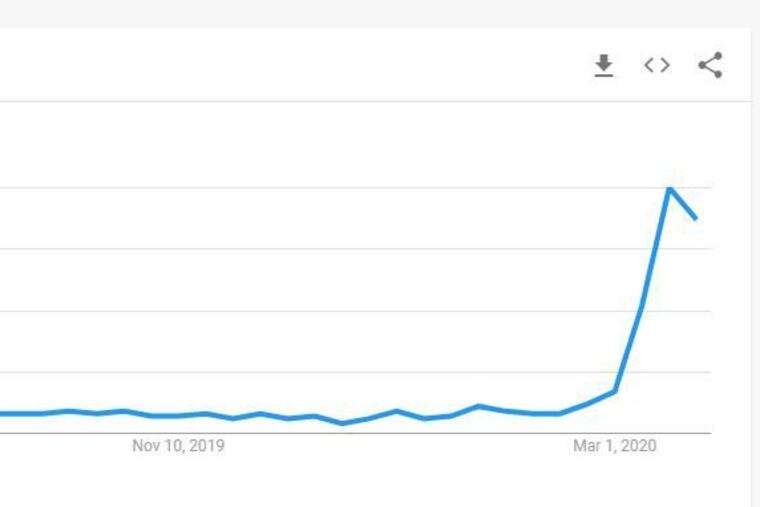Google searches for ‘amid’ have spiked in the U.S. amid the coronavirus
Why are Americans searching the word so much now?

We’re in the middle of some unprecedented times right now, or, you could say, we’re amid them.
When the entire world is facing a pandemic, everything else that happens does so during, because of, or in spite of the disease.
Our headlines — and now, our Google searches — reflect the all-encompassing nature of the coronavirus today, and the language we’re using to describe life during this difficult time.
While Google searches for the words coronavirus and pandemic predictably skyrocketed in the United States this month, another word also saw a similar trend surge in Google searches: amid.
Dating to at least the 14th century, amid is a preposition that means in the middle of or during something. Its roots stem from the Old English phrase on middan and from the Middle English word amidde, according to Merriam-Webster and The Online Etymology Dictionary.
So why are Americans searching the word so much now?
While amid is rarely used in casual conversations today (can you think of the last time you told someone you were “amid" something rather than “in the middle" of something?), it is being used by journalists now. A lot.
A search of the word on Google’s news tab pulled up 435 million results Thursday.
“U.S. deaths from coronavirus top 1,000, amid incomplete reporting from authorities and anguish from those left behind," read a Washington Post headline.
“Waffle House closes 420 locations amid coronavirus pandemic,” wrote CNN.
“Cops arrest group that planned orgy amid coronavirus lockdown in Spain,” the New York Post reported.
Comparatively, when searched on Google’s news tab for the same day — March 26 — of last year, only 33 results appear.
For journalists, every word matters — particularly in a headline, where room for words is tight. Given that most current news stories are about the coronavirus, its effects on the world, or people’s response to it, using amid instead of in the middle of can mean the difference between getting another word into a story or headline or not.
At The Inquirer, we’ve been using amid a lot more too. In March of 2019, amid appeared five times in our stories. This month, it appeared 132.
According to Google Trends, searches for the word in the United States spiked the week of March 15 to 21, the same time searches for the word coronavirus spiked. The trend was brought to The Inquirer’s attention by our analytics editor, Karla Ovalle.
Google Trends uses a sample of a term searched on Google over a specific time period in a particular geographical region and then graphs its popularity on a scale of 0 to 100 “based on a topic’s proportion to all searches on all topics,” according to the site.
From Feb. 16 to 22, amid was at an 8. One month later, it was at 100. Similarly, searches for the word coronavirus were at a 4 in mid-February but a month later were at 100.
While Google Trends does not separate out the times people searched for amid by itself vs. as a part of a longer phrase, it does show the popular terms that accompanied or followed a search of amid. The top-related queries for amid, according to Google Trends, were “amid definition,” “amid meaning,” “amid evil,” “what is amid,” and “amidst.”
According to Google Trends, the region of the country that most searched for amid was Washington, D.C. It does not indicate whether those who searched were politicians.
Pennsylvanians’ searches for amid mirror those of the rest of the nation, peaking at 100 around the week of March 15.
Metro areas in Pennsylvania where people most searched for the word were, in order: Johnstown-Altoona, Wilkes-Barre-Scranton, Pittsburgh, Erie, and Philadelphia.
That is a No. 1 spot we’ll let Johnstown-Altoona have.
Whether amid is new to your vocabulary, or it’s a trusted old friend, one thing is for sure: Until the coronavirus is over, we’re all going to be amid the amids for some time.
And when it is over, we’re sure to be “in the wake of” the coronavirus for months and years to come.